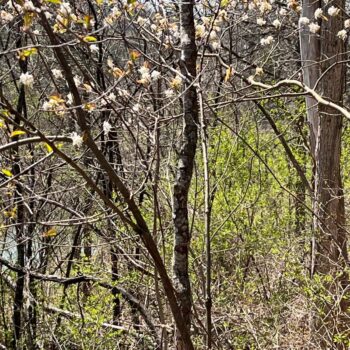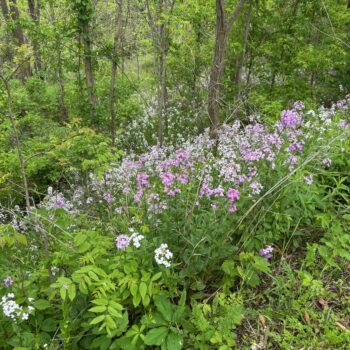Lord Howe Heritage Preserve
The “Preserve” is LARCH’s most recent effort to develop plans that advance the preservation and our understanding of the natural environment, as stated in our original charter (1909).
After a five-year acquisition process, on November 30th, 2023, the former Ticonderoga Historical Society closed on a four-parcel purchase, following the dissolution of the Moses Ludington Hospital Corporation. Three of the parcels are vacant and have both historic and ecological significance. The fourth parcel contains rental property and vacant land for future development. All are close to the Hancock House and all border Moses Circle, Montcalm Street’s “Western Gateway.”
Historically this area includes the July 1758 battlefield site where Lord George Howe, local commander of the British forces during the French and Indian War, was killed. His death had a profound impact on the outcome of the Battle of Carillon the following day. Additionally, this area was part of the scout path used by the French and British forces traveling to Rogers Rock (Mt. Pelee) and of the routes leading to the Battles on Snowshoes in 1757 and 1758. Later early settlers traveled through here on their way to settle the Trout Brook Valley. Today Trout Brook continues to flow from Trout Brook Valley into the LaChute River. It is an important water source within the Lake Champlain watershed, giving these properties significant ecological importance as well.
Currently LARCH is planning the entrance to the preserve, which will be landscaped to augment the Ticonderoga downtown and Main Street revitalization efforts. In the early stages there will be an information kiosk area with a valley overlook. The Center’s future plans are for an educational/interpretive center, as funds become available.

A short set of trails with offshoots to Trout Brook and along wetland areas are being developed. Along these trails there will be interpretive signage of historical and ecological interest. Over the years the preserve transformed from an area of military significance to farmland, then through succession to an area now overcome with invasive species and brook erosion. LARCH, with guidance from various conservancy and environmental organizations, will remove the invasive species and replant specific areas with native bushes and plants. The banks along Trout Brook will be planted with native shrubs to curtail further bank erosion.
Opportunities are available for volunteers to aid the Center in eradicating invasive species and maintaining the trail system. For further information please call the Center at (518) 585 -7868 or email [email protected].










